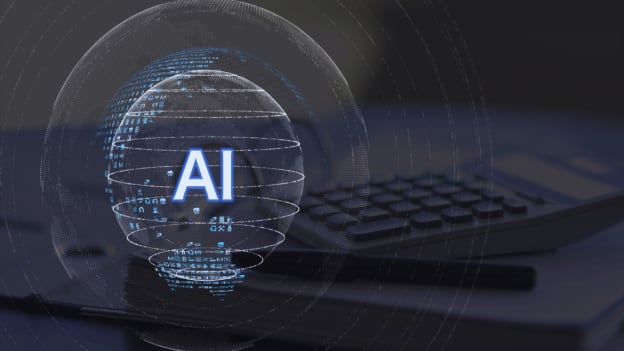The Gen AI hype is real, but so are the risks

No doubt, generative AI is redefining how we work, but the revolution isn't guaranteed—as beneath its surface lie serious fault lines that could slow progress or even derail adoption if left unaddressed.
From bias and ethical risks to regulatory grey zones, from technical bottlenecks to workforce resistance, today’s leaders face a new kind of transformation—one that’s as much about mindset and infrastructure as it is about code and computation.
For example, Samsung banned its employees from using Gen AI tools on its devices and networks after learning that many of its engineers leaked internal source code to the AI-powered chatbot ChatGPT. In many countries, regulators have launched multiple investigations into AI tools over privacy, security, misuse, and bias concerns.
So, for leaders, the challenge is not about deciding whether to use generative AI—it is about ensuring it doesn't backfire. AI isn't plug-and-play. It's plug-and-transform. And while the upside is massive—productivity, personalisation, innovation—the road to impact is riddled with real risks: ethical, organisational, legal, and cultural.
This article breaks down some of the biggest friction points that could stall your AI ambitions and gives you the playbook to stay ahead. Let’s dive in.
Weak data strategy & talent shortage: The foundation flaw
Gen AI may seem like magic, but it runs on very real foundations: high-quality data and skilled talent to manage it. Without both, even the most ambitious AI projects are likely to stall or fail.
Many companies jump into AI without first investing in the underlying data infrastructure or attracting the right talent. Leaders must hire the best data engineers, AI architects, and machine learning specialists to get the desired results. They must establish an internal AI Center of Excellence to lead strategy, governance, and execution. They should also equip current teams with AI fluency so they can contribute meaningfully and scale solutions across the business.
Bias & ethics: The invisible saboteur
AI systems learn from data. However, if that data contains biases, stereotypes, or imbalances, the AI will absorb and replicate them. It’s not intentional, but mathematical.
Bad data leads to bad or biased decisions.
For example, if an AI is trained on past hiring data that favoured certain genders or schools, it may continue that bias—now wrapped in the false credibility of technology. And because AI operates at scale, these biases don’t happen once—they are multiplied across thousands of decisions instantly.
It can be rectified through diverse training data, constant audits, and strong ethical oversight from the beginning.
Data privacy & security: Your trust budget
Gen AI runs on data. The more personal, behavioural, or proprietary the data, the more powerful the output. But with great data comes great responsibility. If your AI systems aren't built with strict privacy and security controls, you are risking more than fines—you’re risking trust, which is now one of your most valuable currencies.
Imagine a healthcare company using Gen AI to analyse patient records for insights. Great going—until it’s discovered that sensitive data was shared without proper safeguards. Suddenly, you are facing legal action, media fallout, and loss of patient trust.
Leaders must treat privacy and security not as a checkbox, but as a core strategy. Ensure data is collected with consent, encrypted by default, and governed with compliance in mind. In today’s AI world, privacy is your license to innovate.
Regulatory uncertainty: The red tape risk
Gen AI is advancing rapidly, but governments and regulators are still catching up. While the tech is outpacing the law, this regulatory grey area creates a huge risk for companies. The absence of clear rules around key issues like bias, privacy, and intellectual property means innovation can either be frozen or lead to unintended legal consequences.
In the absence of established regulations, companies are left exposed—caught between progress and potential litigation. Instead of waiting for regulators to set the rules, create your own internal governance system. Anticipate risks, establish clear data and usage policies, and ensure compliance before potential legal issues arise. Staying ahead of the legal curve can make the difference between being a leader and becoming a cautionary tale.
Job displacement: The human cost of automation
Gen AI can handle repetitive tasks, streamline workflows, and reduce operational costs. But with that power comes a real risk: job displacement. When AI replaces human roles—especially without a clear plan for redeployment—it can trigger employee anxiety, lower morale, and even public backlash.
The real risk isn’t just losing jobs—it’s losing trust. As a leader, focus not just on automation, but on augmentation. Proactively reskill and upskill employees to take on higher-value, more strategic roles. Communicate early, invest in training, and show your workforce that AI is a tool to elevate people, not replace them.
Organisational change: The execution gap
Gen AI isn’t just another software rollout; rather, it’s a fundamental shift in how work gets done. But no matter how powerful the tool, it will fall flat without organisational buy-in and thoughtful change management.
A company, for example, introduces a Gen AI-powered tool designed to boost lead generation and automate follow-ups. But salespeople don’t use it because the tool doesn’t fit into their daily workflow. They weren’t trained properly. The result is low adoption, useless investment, and missed opportunity. There is an execution gap here.
To address it, the company can build cross-functional champions who advocate for AI within departments. It can communicate benefits as early as possible and try to shift the mindset from fear to empowerment. AI transformation is as much about culture and communication as it is about code. Without people on board, even the best AI won't scale.












